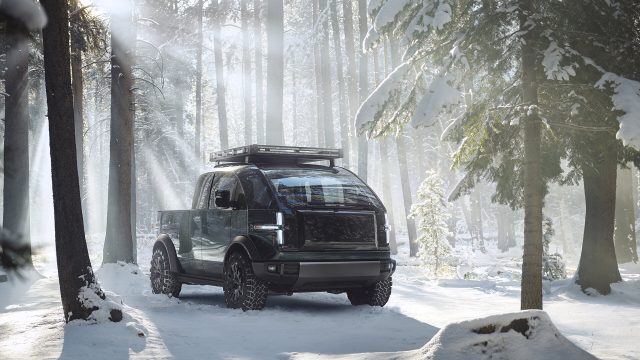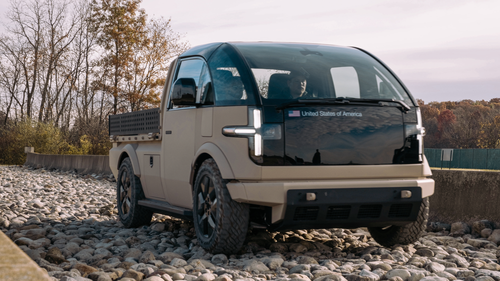Canoo has delivered its new light tactical vehicle (LTV) to the United States Army for Analysis and Demonstration in fulfillment of a $67,500 contract awarded in July 2022. The $70,000 question is, will the single-cab configuration of this unique vehicle be made available to the civilian market? If it’s good enough for the US military, it should be good enough for us overlanders (please, don’t mention the Hummer).
Having a vehicle that can charge and run in the field (presumably via solar and backup battery banks) and not depend on a supply of fossil fuels would no doubt represent a logistical asset for remote military operations (and well-equipped explorers).
Other advantages include the following:
- Extended range, increased onboard power for capabilities such as directed-energy weapons
- Jammers and electrified armor
- Reduced maintenance costs and associated logistics footprint
- Silent watch and silent mobility
- A reduced thermal and acoustic signature (thank you, National Defense Magazine)
The Canoo LTV is engineered for extreme environments with a focus on passenger and battery safety. The LTV incorporates carbon Kevlar in its body structure for strength without added weight. We are intrigued by the claim of stealth configurations that could take “stealth” camping to a whole new level. We imagine for military applications, stealth mode refers to a combination of zero emissions as well as the aforementioned reduced thermal and acoustic signatures.
Tony Aquila, Chairman and CEO of Canoo said,
“The LTV is another milestone proving the power of our technology and how it can be used, even in tactical situations. This is a winning algorithm for our customers and company.”
Billed as a jack-of-all-trades, the single-cab LTV can be converted from a pickup to a flatbed truck, a cargo vehicle, and more. Featuring a convertible flatbed platform, the LTV should be capable of carrying standard-sized plywood, construction materials, and oversized cargo, as well as tactical equipment.


Canoo Pickup Truck
Canoo vehicles are based on the company’s “proprietary multi-purpose platform, which integrates all the critical components of an electric powertrain, so it is as flat and efficient as possible while maximizing cabin and cargo space.”
A modular attachment system and accessories are designed to swiftly interchange the flatbed walls with many other types of mounts, including racks, ramps, storage boxes, tents, or tactical systems. This modular “upfitting” will enable the LTV to have mission-specific configurations at a lower total cost of investment.
The LTV has a proprietary all-wheel drive system with up to 600 horsepower. To support the increased demands of off-road environments, the LTV incorporates air springs, a raised suspension, and 32-inch all-terrain tires, which increase ground clearance for extreme or rugged conditions.
Full specifications will be revealed closer to production, and it remains to be seen what features of the LTV will filter into the civilian market.
Our No Compromise Clause: We carefully screen all contributors to ensure they are independent and impartial. We never have and never will accept advertorial, and we do not allow advertising to influence our product or destination reviews.


